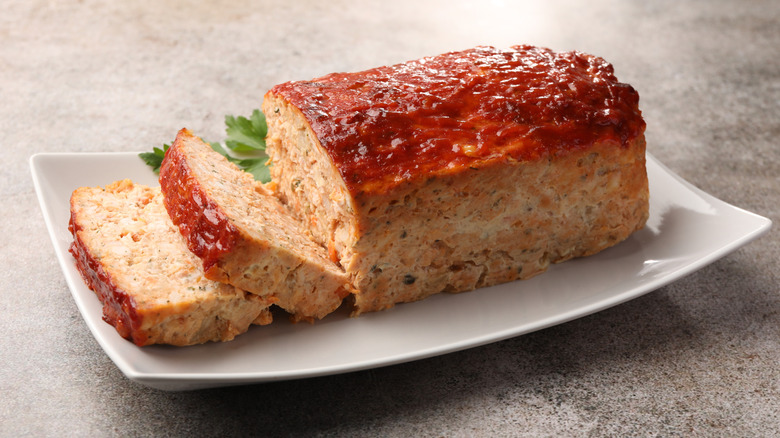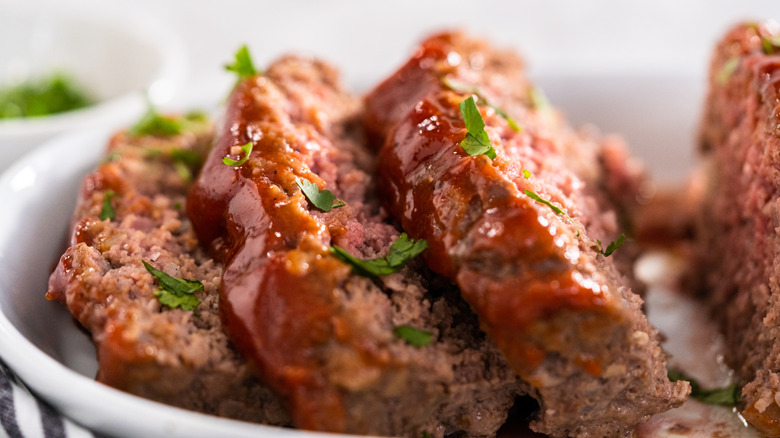How The Great Depression Turned Meatloaf Into The Classic American Comfort Meal It Is Today
A classic meatloaf is undeniably an American staple. Made with simple ingredients — most of which are pantry staples — it's easy to quickly whip up and can feed a crowd. It's savory, it's meaty, and, most importantly, it's comforting. Meatloaf's origins actually go all the way back to ancient Rome, but it wasn't until the Great Depression that it became the American comfort meal that it is now.
Meatloaf is a relatively cheap meal. Besides ground meat, all you really need is bread crumbs, ketchup, an egg or two, onion, Worcestershire sauce, and spices. Each of these additional items is a kitchen staple that not only lasts a long time but goes a long way — in other words, you are able to make many meatloaves by only needing to rebuy the meat and eggs. During the Great Depression, families had to stretch their meals as far as they could possibly go, so being able to cook something like meatloaf was an invaluable resource.
It's a versatile dish with different ways to make it, so it wouldn't get old as fast as some other dishes may have. You could use different spices, different meats, or incorporate different sauces to make each meatloaf different from the last.
The modern meatloaf grew in popularity in the years leading up to the Depression
As mentioned, the origin of meatloaf dates back centuries — but it looked a bit different back in the time of ancient Rome (it contained minced meat, which we're used to, but it also contained animal brains, which we certainly aren't used to). The meatloaf that we know of today dates back to around the 1870s — although, back then, it was actually eaten for breakfast. However, meatloaf became more popular around the 1890s, as the rise of the meatpacking industry led to scraps being utilized. By the time the Great Depression happened, meat grinders had become more commonplace, so families could easily grind their own meat. Some meatloaves during this time even combined multiple types of meat, which made sense as they needed to make the best use of all meat scraps.
Because individuals needed to stretch their meat supply, it was during the Great Depression that it became more common to add ingredients such as oats and flour — and even, notably, ketchup, which is now a staple ingredient for just about every meatloaf recipe. So, in short, the Great Depression is the reason that you always see ketchup on top of meatloaf, as the popular condiment added flavor and helped the dish maintain a moist texture.
All in all, at the start of the Great Depression, meatloaf was simply a smart meal that could go a long way. By the end of the period, it had become a beloved meal and an American staple that would continue to be made for decades to come.

